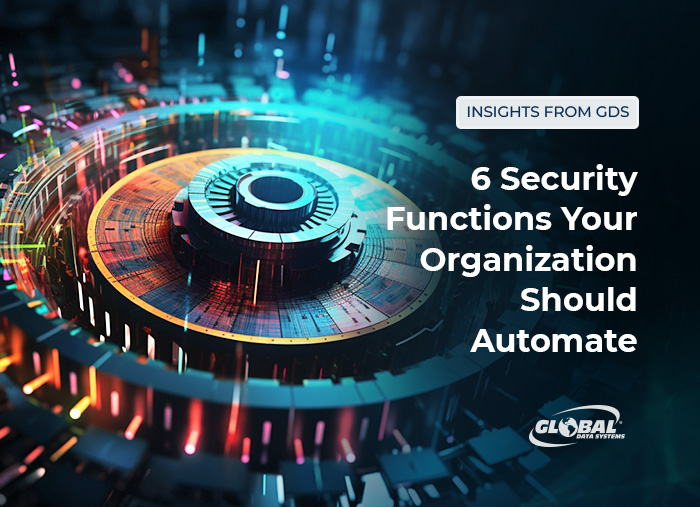6 Security Functions Your Organization Should Automate
Manual security processes are no longer sufficient for dealing with the growing volume of sophisticated cyber threats across increasingly complex IT environments. With an estimated 560,000 new pieces of malware detected each day and a cyberattack occurring every 39 seconds, security automation has become a necessity.

Automated security systems can handle vast amounts of data with the efficiency and speed necessary to detect and respond to threats across today’s highly distributed IT environments, which include cloud services, edge servers, IoT devices, mobile endpoints and content delivery networks. Equally important, security automation also reduces human errors that can create vulnerabilities and increase the risk of attacks.
According to the latest Cost of a Data Breach report from IBM Security and the Ponemon Institute, automation shortens the security breach lifecycle by an average of 108 days. That can decrease the cost of a breach by as much as $3.05 million. Here are six security functions all organizations should consider automating:
1. Data encryption
Encryption algorithms scramble data at rest and in transit, making it unreadable to unauthorized parties. However, human errors such as forgetting to encrypt a file, using incorrect encryption settings or mishandling encryption keys can lead to data breaches or loss. Automated encryption ensures that data is consistently and uniformly protected throughout an organization. Most automated encryption tools can be easily integrated into existing systems, applications and processes. They’re also highly scalable, making it easy to handle growing data volumes without human intervention.
Automation fortifies defenses, minimizes vulnerabilities, and combats the ever-evolving landscape of cyber threats, ensuring comprehensive protection for your organization.
2. Patch Management Automation
Patching is an essential security practice, but the typical computer needs dozens of patches from multiple vendors every year. Manual testing and applying that many patches for every machine in an organization is both time-consuming and error-prone. Automation streamlines the process of identifying, deploying and verifying updates. It also minimizes vulnerabilities by regularly collecting patches, scheduling updates and ensuring they are applied consistently.
3. Cloud security
Automated cloud access security brokers (CASBs), a key component of managed cloud security, allow organizations to monitor all their cloud instances in real time. They track everything from user behavior to data flows, utilizing artificial intelligence, machine learning, and behavior analytics to detect anomalies that could indicate an active threat. CASBs also analyze login behavior for the thousands of applications connected to cloud services, identifying additional threats and contributing to robust managed cloud security strategies.
4. Threat detection
AI-powered threat detection and response solutions can analyze vast amounts of threat intelligence from various sources to “learn” to distinguish between normal and suspicious activity. By examining file characteristics, code execution patterns and network behavior, AI algorithms can identify patterns indicative of potential threats. This early detection enables faster response and mitigation efforts.
5. Vulnerability scanning
Automated scanners run predefined tests and heuristics to systematically search for vulnerabilities such as software flaws, misconfigurations or outdated components. By pinpointing potential entry points for cyberattacks, they enable organizations to preemptively patch or mitigate these vulnerabilities before malicious actors can exploit them.
6. Alert triage
Enterprise security systems can generate more than 10,000 threat alerts per month, but analysts say more than half are false alarms. Alert triage tools reduce false positives by automatically assessing and prioritizing threat alerts, with critical alerts escalated for immediate action. These tools also gather additional context about threats, such as the affected systems, users or potential attack vectors.
Transform Your Security Landscape: Choose GDS for Automated Cyber Resilience
Increasingly sophisticated threats and the growing scale and complexity of distributed IT systems make it difficult, if not impossible, to address cybersecurity solely with manual processes. Contact us to learn more about enhancing your security capabilities with automation, and how our fully managed security services can reduce complexity and risk and increase your cyber resilience.
Benefits of Managed IT Services from Global Data Systems
- Strategic Managed IT: We help you solve your technology related business problems.
- Connectivity: We get you reliable, secure connectivity anywhere in the western hemisphere in 48 hours.
- Support: When you need help simply call our 24x7x365 support number.
- Billing: Instead of managing hundreds of vendors - get one, easy to read bill from GDS.
Contact Managed Services Provider, Global Data Systems >
